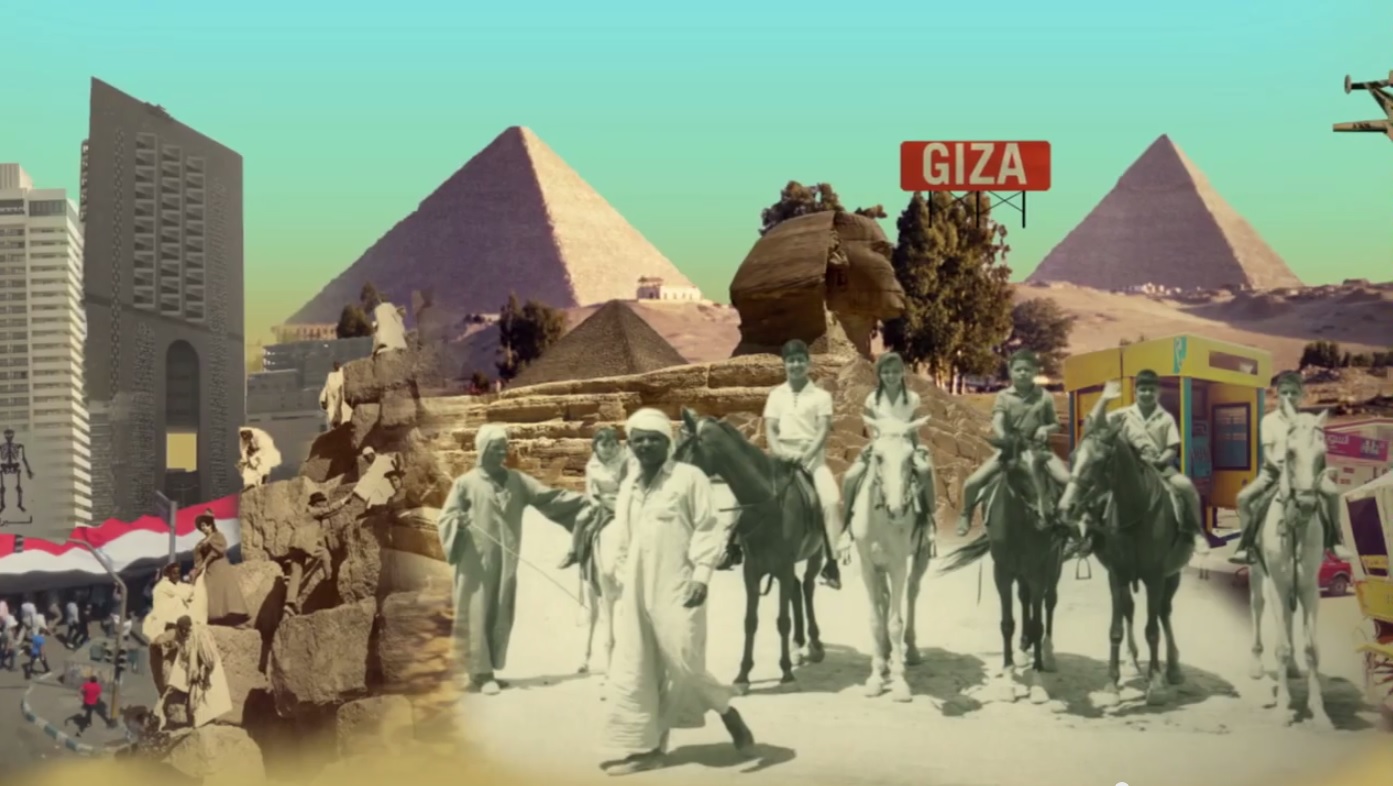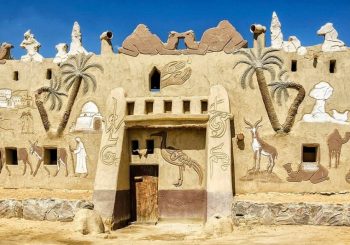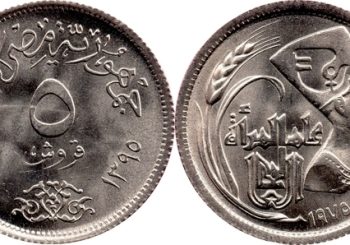Cairenes have been rediscovering and sharing the Egyptian capital’s urban heritage by images on an interactive wall. It sounds too good to be true but might actually become reality within a couple of years. The wall will be called Sanduq el-Dunia (‘The World In A Box’/’Cosmorama’), a project the Danish Egyptian Dialogue Institute (DEDI) is trying to realize in the near future.
When strolling through Cairo’s neighborhoods, a sad sight is inevitable to see. Magnificent buildings erected during various eras are empty and neglected. Heritage is going to waste. New buildings however seem to be popping up like mushrooms while you’re not looking.
In addition to this, Cairo does not have a city museum or institution that fully archives the history of the city and makes it available to the public. Vintage pictures on social media are often the only resources to raise awareness of Cairo’s heritage, since even the government for instance fails to use a correct image of the Suez Canal on its latest official stamp.
It all started in 2013 in Copenhagen, where a well-known installation called The WALL was transformed into four 3 meter long screens filled with images from Cairo. For a change, the interactive, multi-user and multi-touch interface project introduced viewers to Cairene history, culture and heritage.
When DEDI learned about this particular archival wall called Sanduq el-Dunia, they had a plan. They wanted to transfer it to the Egyptian capital. With the Nile as a center guide, the goal is to create a layered archive of images that a passersby can hover through.
Therefore DEDI has been gathering a growing consortium of Egyptian, Danish and international partners dealing with urban heritage, as well as historians, graphic and visual artists, software developers and programmers. Next to institutions and photographers, DEDI also counted on the help of individuals who were willing to share their personal photo collections. Over the past months, a rich compilation of images reflecting Cairo’s urban life, society and culture has been composed.
This content is being divided into different themes. Cairo as a city in the making is shown in the ‘Utopia’ theme. ‘Personal and Family Albums’ includes photographs of weddings, religious celebrations, and icons of the Egyptian history. Images of buildings dating from medieval times up to today are divided into the ‘Architecture’ theme, while recent political history is reflected in the ‘Street Art’ section. Other subdivisions are ‘The Nile’ and ‘Navigation in the City’.
The Cairo version of Sanduq el-Dunia would be adapted to Egypt’s weather conditions by using different materials. Every picture, projected on two plasma screens, will be clickable for more information. Interactive as these touch screens are, viewers will be able to add their own comments, make a video, take pictures in the shape of a postcard, and send it to their friends.
With this installation DEDI hopes to create an opportunity for Cairo’s residents to rediscover their city, its beauty, what it was, and where its beauty stands in a contemporary context. The idea is to preserve and share a collective memory, especially since so much of the city’s heritage has been lost, mainly due to corruption.
“We lost our connection with the city and don’t know its history,” Omneya Abdel Barr, project officer at DEDI, says.
“That’s why we want to create a mind map, so people can discover gems nobody knows about.”
She adds that the installation also beholds optimistic aims: “It will be accessible for everyone, and it will serve as a platform for Cairenes to aspire their hopes.”
It is striking, however, that the archive hardly contains any photographs of protests and demonstrations. Doesn’t the wall lack a massively important part of Egypt’s contemporary history this way? “A lot of these pictures are copyrighted. Another thing is that we wanted to talk about the ‘other square’ this time,” is DEDI’s answer.
DEDI’s plan sounds great, but the high standard of art technology the Institute is striving for comes with a certain price tag. Omneya Abdel Barr is currently searching for investors as an astonishing amount of several million Egyptian pounds is what DEDI needs to finish the project according to plan.
Whether it wouldn’t be better if (at least a part of) this money would be invested in a public physical archive/photographic museum, and the decent restoration and maintenance of still existing Cairene heritage, remains the question.
Sanduq el-Dunia is a project managed by the Danish Egyptian Dialogue Insitute and guided by the Museum of Copenhagen
For more information on investing in this project: [email protected]






Comments (9)
الله عليكى يا أم الدنيا
العاب بنات
social online
10 best mobile phones in the world
عزل مائى
عزل مائى وحرارى
أفضل شركة عزل مائى بالرياض
شركات عزل الاسطح بالرياض
عزل خزانات المياه
شركة عزل مائى وحرارى بالرياض
عزل مائى
عزل مائى وحرارى
أفضل شركة عزل مائى بالرياض
شركات عزل الاسطح بالرياض
عزل خزانات المياه
شركة عزل مائى وحرارى بالرياض
عزل مائى
عزل مائى وحرارى
أفضل شركة عزل مائى بالرياض
شركات عزل الاسطح بالرياض
عزل خزانات المياه
شركة عزل مائى وحرارى بالرياض
عزل مائى
عزل مائى وحرارى
أفضل شركة عزل مائى بالرياض
شركات عزل الاسطح بالرياض
عزل خزانات المياه
شركة عزل مائى وحرارى بالرياض
شركة تسليك مجارى بالرياض
تسليك مجارى
شركة تسليك مجارى
أفضل شركة تسليك مجارى بالرياض
تسليك مجارى المطبخ
شركة شفط مجارى
شركات تسليك مجارى
شركة تسليك مجارى بالرياض
تسليك مجارى
شركة تسليك مجارى
أفضل شركة تسليك مجارى بالرياض
تسليك مجارى المطبخ
شركة شفط مجارى
شركات تسليك مجارى
شركة تسليك مجارى بالرياض
تسليك مجارى
شركة تسليك مجارى
أفضل شركة تسليك مجارى بالرياض
تسليك مجارى المطبخ
شركة شفط مجارى
شركات تسليك مجارى
أفضل شركة تسليك مجارى بالرياض
تنظيف خزانات بالرياض
شركة تسليك مسابح بالرياض
شركة تسليك مجارى
أفضل شركة تسليك مجارى بالرياض
تسليك مجارى المطبخ
شركة شفط مجارى
شركات تسليك مجارى
أفضل شركة تسليك مجارى بالرياض
تنظيف خزانات بالرياض
شركة تسليك مسابح بالرياض
شركة رش مبيدات بالرياض
شركات رش مبيد
شركة مكافحة الحشرات بالرياض
شركات مكافحة الحشرات
أفضل شركة رش مبيد بالرياض
شركة القضاء على القوارض
شركة مكافحة الصراصير
شركة رش مبيدات بالرياض
شركات رش مبيد
شركة مكافحة الحشرات بالرياض
شركات مكافحة الحشرات
أفضل شركة رش مبيد بالرياض
شركة القضاء على القوارض
شركة مكافحة الصراصير
شركة رش مبيدات بالرياض
شركات رش مبيد
شركة مكافحة الحشرات بالرياض
شركات مكافحة الحشرات
أفضل شركة رش مبيد بالرياض
شركة القضاء على القوارض
شركة مكافحة الصراصير
شركة رش مبيدات بالرياض
شركات رش مبيد
شركة مكافحة الحشرات بالرياض
شركات مكافحة الحشرات
أفضل شركة رش مبيد بالرياض
شركة القضاء على القوارض
شركة مكافحة الصراصير
نقل اثاث
نقل اثاث بالرياض
شركة نقل اثاث بالرياض
أفضل شركة نقل اثاث
نقل عفش
شركة نقل عفش بالرياض
نقل اثاث
نقل اثاث بالرياض
شركة نقل اثاث بالرياض
أفضل شركة نقل اثاث
نقل عفش
شركة نقل عفش بالرياض
نقل اثاث
نقل اثاث بالرياض
شركة نقل اثاث بالرياض
أفضل شركة نقل اثاث
نقل عفش
شركة نقل عفش بالرياض
نقل اثاث
نقل اثاث بالرياض
شركة نقل اثاث بالرياض
أفضل شركة نقل اثاث
نقل عفش
شركة نقل عفش بالرياض
نقل اثاث بالرياض
شركة نقل اثاث بالرياض
أفضل شركة نقل اثاث
نقل عفش
شركة نقل عفش بالرياض
تخزين اثاث
شركة تخزين اثاث
تخزين اثاث فى الرياض
تخزين اثاث داخل الرياض
أفضل شركة تخزين اثاث بالرياض
تخزين عفش
تخزين اثاث
شركة تخزين اثاث
تخزين اثاث فى الرياض
تخزين اثاث داخل الرياض
أفضل شركة تخزين اثاث بالرياض
تخزين عفش
تخزين اثاث
شركة تخزين اثاث
تخزين اثاث فى الرياض
تخزين اثاث داخل الرياض
أفضل شركة تخزين اثاث بالرياض
تخزين عفش
تخزين اثاث
شركة تخزين اثاث
تخزين اثاث فى الرياض
تخزين اثاث داخل الرياض
أفضل شركة تخزين اثاث بالرياض
تخزين عفش
كشف تسربات
شركة كشف تسربات المياه
شركة كشف تسربات
شركة نقل عفش
أفضل شركة كشف تسربات
شركة كشف تسربات بالرياض
كشف تسربات
شركة كشف تسربات المياه
شركة كشف تسربات
شركة نقل عفش
أفضل شركة كشف تسربات
شركة كشف تسربات بالرياض
كشف تسربات
شركة كشف تسربات المياه
شركة كشف تسربات
شركة نقل عفش
أفضل شركة كشف تسربات
شركة كشف تسربات بالرياض
كشف تسربات
شركة كشف تسربات المياه
شركة كشف تسربات
شركة نقل عفش
أفضل شركة كشف تسربات
شركة كشف تسربات بالرياض
كشف تسربات
شركة كشف تسربات المياه
شركة كشف تسربات
شركة نقل عفش
أفضل شركة كشف تسربات
شركة كشف تسربات بالرياض
شركة كشف تسربات بالرياض
[…] Rediscovering Cairo's Urban Heritage on a Digital Wall “That's why we want to create a mind map, so people can discover gems nobody knows about.” She adds that the installation also beholds optimistic aims: “It will be accessible for everyone, and it will serve as a platform for Cairenes to aspire their … Read more on Egyptian Streets […]